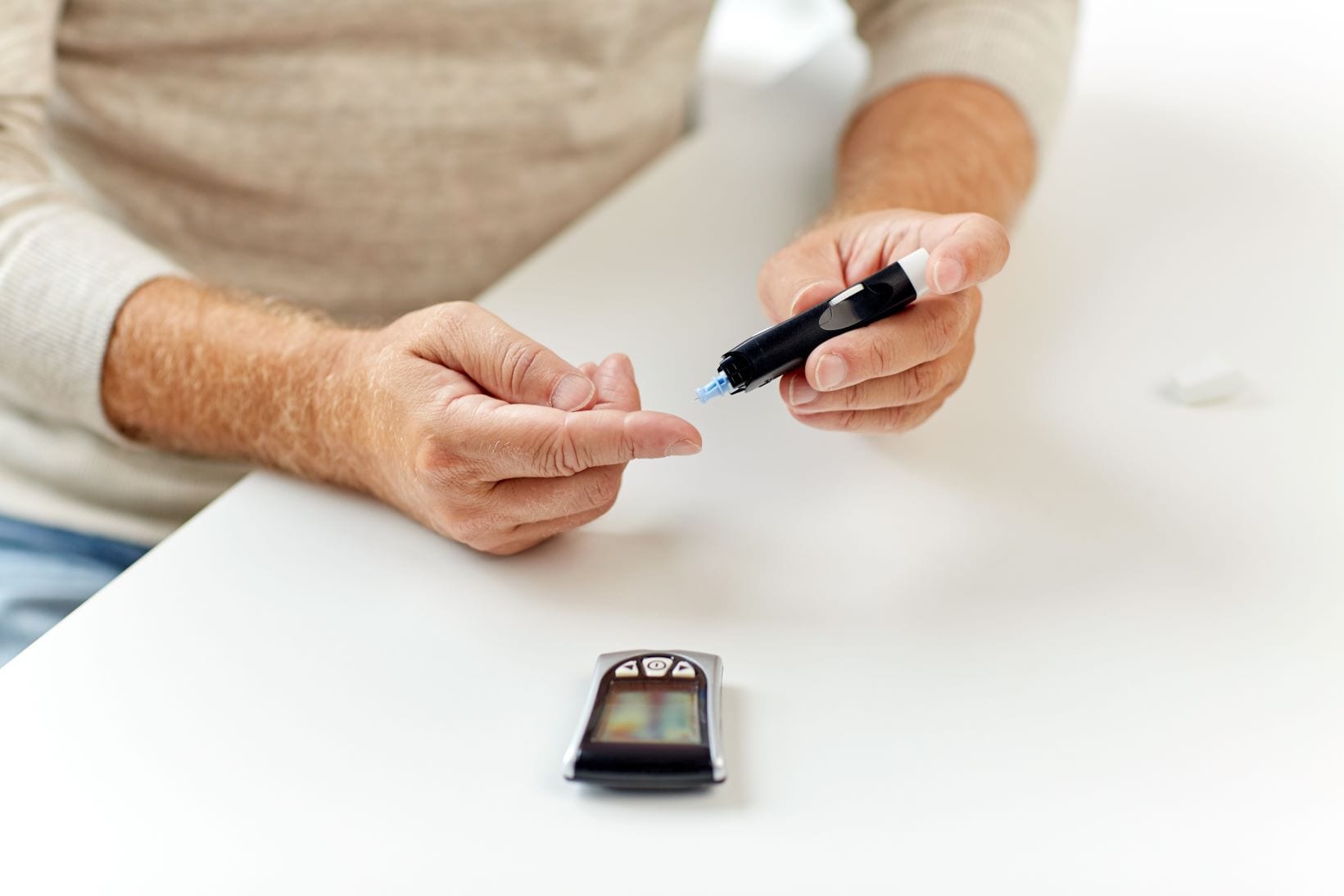What you need to know about hyperglycemia

Hyperglycemia often affects people living with diabetes
Hyperglycemia, or high blood sugar, can occur on a daily basis for many people living with diabetes. It can be frustrating to manage and difficult to determine the cause, which makes it more challenging to deal with. Hyperglycemia happens when there’s too much sugar (glucose) in your blood. There are many causes, but it’s usually due to either a lack of insulin (hormone) or the body’s inability to use insulin (insulin resistance). It is defined as a fasting blood sugar level over 125 mg/dL or a two-hour post-meal sugar of over 180 mg/dL.
Symptoms
Symptoms of hyperglycemia can vary from person to person, but often include:
- Increased thirst and a dry mouth
- Frequent urination
- Fatigue
- Blurred vision
- Unintentional weight loss
- Recurrent infections, such as thrush, bladder infections (cystitis), and skin infections
Although many believe food is the main culprit, there can be numerous causes of hyperglycemia. Approximately 42 factors can have an impact on blood sugar numbers!
Health effects
If left untreated, hyperglycemia can have significant short- and long-term effects on the body. Short-term high blood sugar can result in dehydration, unhealthy weight loss, headaches, and nausea. Long-term effects include cardiovascular disease, nerve damage, kidney damage/failure, blindness (retinopathy), foot problems/amputations, bone and joint problems, and dental problems.
Related health conditions
When sugar levels are unmanaged, it can lead to other complications.
Diabetic ketoacidosis (DKA)
DKA is a serious and life-threatening complication of short-term hyperglycemia. It occurs when sugar cannot enter the cells of the body, so fat is broken down for energy instead. This produces ketones, which are toxic to our bodies and, if ignored, can lead to a coma that can be life-threatening. Symptoms of DKA include sweet “fruity” breath, abdominal pain, nausea, and vomiting. If you suspect DKA, you should test for ketones at home and immediately contact your healthcare provider.
Hyperosmolar hyperglycemic state
Hyperosmolar hyperglycemic state is another short-term complication that occurs when insulin doesn’t work properly, and sugar levels become greater than 600 mg/dL. If this condition develops, your body can’t use glucose or fat for energy, which can lead to severe dehydration or coma as well.
Standard of care: automated insulin delivery
The goal of blood sugar management is the prevention of long-term effects. Although not always avoidable, improved blood sugar management may help delay the onset of these complications. There are many approaches to control sugar levels in people with diabetes. According to the American Diabetes Association (ADA), automated insulin delivery (AID) is the standard of care for the management of type 1 diabetes.
The MiniMed™ 780G system
AID is the standard of care and it's important to select the right system! The MiniMed™ 780G system is designed to make diabetes management easier with features including an adjustable basal target, auto corrections, and Meal Detection™ technology* to assist with carb counting. Meal Detection™ technology with the MiniMed™ 780G system can provide additional insulin coverage if carbs are miscalculated at mealtimes. Nearly 50 percent of people living with type 1 diabetes struggle with meal management and consider it the most burdensome aspect of diabetes management.
Takeaway
Hyperglycemia is often a daily concern for people living with diabetes. The causes, short- and long-term complications, and management of increased sugar levels can be challenging, but there are also many approaches to managing it. Have a conversation with your healthcare provider so you can choose the one that’s best for you!
Written by: Heather Cunningham, MS, RD, CDCES – Medtronic employee
References
* Taking a bolus 15 – 20 min before a meal helps to keep blood sugar levels under control after eating.
[block:block=16]
Important safety information: MiniMed™ 780G system with SmartGuard™ technology with Guardian™ 4 sensor
The MiniMed™ 780G system is intended for continuous delivery of basal insulin at selectable rates, and the administration of insulin boluses at selectable amounts for the management of type 1 diabetes mellitus in persons seven years of age and older requiring insulin as well as for the continuous monitoring and trending of glucose levels in the fluid under the skin. The MiniMed™ 780G system includes SmartGuard™ technology, which can be programmed to automatically adjust insulin delivery based on the continuous glucose monitoring (CGM) sensor glucose values and can suspend delivery of insulin when the sensor glucose (SG) value falls below or is predicted to fall below predefined threshold values.
The Medtronic MiniMed™ 780G system consists of the following devices: MiniMed™ 780G insulin pump, the Guardian™ 4 transmitter, the Guardian™ 4 sensor, One-press serter, the Accu-Chek™ Guide Link blood glucose meter, and the Accu-Chek™ Guide test strips. The system requires a prescription from a healthcare professional.
The Guardian™ 4 sensor is intended for use with the MiniMed™ 780G system and the Guardian 4 transmitter to monitor glucose levels for the management of diabetes. The sensor is intended for single use and requires a prescription. The Guardian™ 4 sensor is indicated for up to seven days of continuous use.
The Guardian™ 4 sensor is not intended to be used directly to make therapy adjustments while the MiniMed™ 780G is operating in manual mode. All therapy adjustments in manual mode should be based on measurements obtained using a blood glucose meter and not on values provided by the Guardian™ 4 sensor. The Guardian™ 4 sensor has been studied and is approved for use in patients ages 7 years and older and in the arm insertion site only. Do not use the Guardian™ 4 sensor in the abdomen or other body sites including the buttocks, due to unknown or different performance that could result in hypoglycemia or hyperglycemia.
WARNING: Do not use the SmartGuard™ feature for people who require less than 8 units or more than 250 units of total daily insulin per day. A total daily dose of at least 8 units, but no more than 250 units, is required to operate in the SmartGuard™ feature. |
WARNING: Do not use the MiniMed™ 780G system until appropriate training has been received from a healthcare professional. Training is essential to ensure the safe use of the MiniMed™ 780G system.
WARNING: Do not use SG values to make treatment decisions, including delivering a bolus, while the pump is in Manual Mode. When the SmartGuard™ feature is active and you are no longer in Manual Mode, the pump uses an SG value, when available, to calculate a bolus amount. However, if your symptoms do not match the SG value, use a BG meter to confirm the SG value. Failure to confirm glucose levels when your symptoms do not match the SG value can result in the infusion of too much or too little insulin, which may cause hypoglycemia or hyperglycemia.
Pump therapy is not recommended for people whose vision or hearing does not allow for the recognition of pump signals, alerts, or alarms. The safety of the MiniMed™ 780G system has not been studied in pregnant women, persons with type 2 diabetes, or in persons using other anti-hyperglycemic therapies that do not include insulin. For complete details of the system, including product and important safety information such as indications, contraindications, warnings and precautions associated with system and its components, please consult https://www.medtronicdiabetes.com/important-safety-information#minimed-780g and the appropriate user guide at https://www.medtronicdiabetes.com/download-library.


